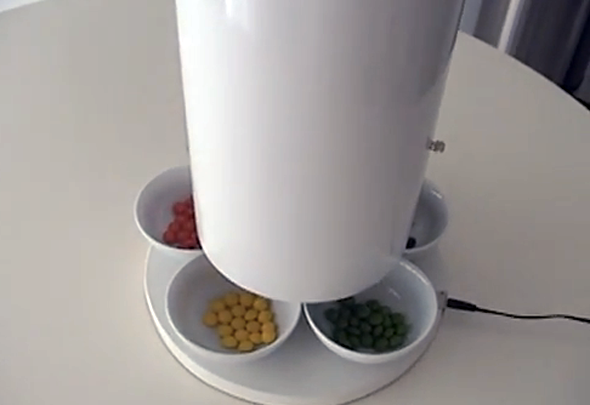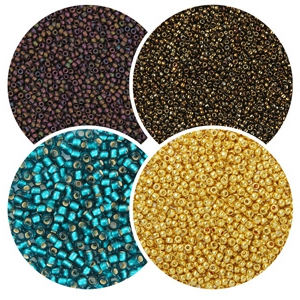This is perhaps one of the most ancient jewelry that people came up with. They were adorned by the mods of Ancient Egypt, China, India. They well knew what beads were in Ancient Russia. With his help, the outfits of the nobility turned into a real work of art.

What is a bead?
These are small (and sometimes not very) glass, plastic, ceramic, wooden and even semi-precious stones elements with a hole in which you can thread fishing line, thread, wire.
Beads made of metal and stones are practically not used - the products are too heavy. As a rule, these are parts of regular oval or spherical shape, however, faceted samples are also found. A special kind of cylindrical beads is called bugles.
Bead leaders
Today, in the world beads are produced in many countries, but the Czech Republic, Japan and China are considered recognized leaders. The products of these countries differ in quality and price. The cheapest is beads from China. Production is characterized by mass, because of this, quality sometimes suffers.
The production of beads in the Czech Republic has been established on a large scale, in addition, all technological standards are observed in this country, therefore Czech products confidently take the second place in terms of quality in the world.

Strong first place in the world is occupied by Japanese manufacturers.
Beads in Russia
From the end of the eighteenth to the beginning of the twentieth century, the production of beads in Russia was carried out by small artisan workshops. They were in the Moscow, Kazan and Kiev provinces. Beads were used by local jewelers, needlewomen and artisans.
Bead Production Technology
This is a fairly complex and high-tech process, however, like everything related to decorative glass. World famous manufacturers use the latest equipment and the finest glass tubes.
Initially, glass melts in an oven at a temperature of 1550 degrees. Dyes and other fillers are added to it, which can give different effects to beads. The molten glass mass is passed through a matrix with very small holes. When it flows down, the mixture is cooled and stretched using the mechanism of stretching the threads.
Compressed air leaves holes in the thinnest ducts. The size of the beads depends on how much the thread is stretched. Fully hardened tubes are cut into individual elements. This is the so-called exhaust method.
In addition, there is a “twisted” or “wound” method. In this case, the soft glass mass, which is located at the end of the metal strip, is pulled into the thinnest thread with a length of about 100 meters using the second end of the same strip. When it hardens, it is cut into pieces about a meter long.
The resulting glass rods are melted from one end and wound onto a wire to the desired size. Excess rod is removed. Then the wire is heated to make the future beads even. When about five rings are collected on the wire, it is cooled, while it is reduced in size, and the beads are easily removed from it. This method is rarely used in production - it is more suitable for making pressed beads rather than beads.

Dyes Used
They are very diverse - iron, cobalt, and other elements. Interestingly, red and all its shades are the most difficult to produce in the glass industry.The difficulty lies not so much in the coloring itself, but in maintaining exactly the same shades in each batch. Precious metals are often used to create beads of red shades. Because of this, there is a significant increase in the cost of glass and, as a result, beads.
Technology improvement
Leading global manufacturers are constantly looking for ways to improve their products. For example, Czech craftsmen almost completely changed the composition of glass for making beads. Before being placed in the oven, spar or clay is added to the mixture in certain proportions, so the final product should rather be called porcelain beads. Such products are made by pressing. And although such beads are opaque, the technology gives them a unique shine that distinguishes them from glass ones.
What color depends on
The production of beads and obtaining a beautiful and even color depends not only on high-quality dyes, but also on how well the drum is tuned and working, in which the beads are ground and rounded. An important role is played by the proper washing and drying of the semi-finished product, as well as its polishing.

Beads that have a matte color, without shine, unevenly colored, are returned to re-melting. The rest is covered with special solutions that improve its quality and increase its value. Such a product is expensive, but it should be noted that the production of beads is very expensive.
Costly production
Making beads as a business will require large financial investments. It will take a lot of modern and expensive equipment, apparatus, furnaces. In addition, production is very energy intensive. Smelters require a lot of gas or electricity to operate.
Moreover, knowing how to make beads, a novice entrepreneur should understand that for high-quality reflow, rounding, shaping of beads, laser installations are required, and this, as you know, is a lot of money. And even if the entrepreneur has such funds, one should consider whether his products will withstand competition with goods from China, Germany, the Czech Republic, Japan, etc.
Molten beads
This is one of the most popular materials for needlework. Sometimes you may hear the question of whether it is possible to produce beads at home. Based on all the foregoing, it becomes clear that this is impossible. But to melt the beads is available to everyone. True, this applies to plastic beads.
What is it for
Nowadays, beads come up with a new application. From the bright molten material, original, creative things are obtained that can take their rightful place in any interior.

You will need:
- plastic beads of any color that you like;
- molds in which the beads will melt;
- oil for lubricating molds;
- microwave or oven.
Start with small samples to see what you get.
Getting started
Take a regular baking sheet and cover it with parchment - baking paper. After that, oil well the form you have chosen. Take the plastic beads and lay it on the bottom of the mold, preferably in one layer.
Preheat the oven to 200 degrees and place a baking tray with a mold in it. Beads can be located randomly or in a certain sequence - this is a matter of your imagination. Check the degree of melting every 5-7 minutes. Usually the whole process takes no more than 20 minutes. Then we take out the baking sheet and allow the mass to cool. We get the figures and enjoy our creativity. This way you can make Christmas decorations, home decoration, jewelry, wall panels, etc.

We complicate the task
Now you can move on to more “serious” compositions. Try experimenting with different colors and textures of beads, with different transparency. You can think of a composition in which different forms will be combined.
If you melt the beads in a glass baking dish (it should be carefully lubricated with oil so that the beads do not stick), then you can get an original and convenient vase. When you get the necessary experience, you can try to make stained glass windows that can be not only beautiful, but also thematic. As you can see, everything is quite simple, most importantly, do not be afraid to experiment.
Beading today
This oldest type of needlework in modern fashion has occupied its niche. A huge color gamut, unlimited possibilities of modeling products from this material are able to satisfy any whim of a modern fashionista. Particularly relevant now are bead jewelry - earrings and necklaces, brooches and belts, bracelets and hats. They always look stylish and sophisticated.
In the latest collections, fashion designers combine weaving, beads and feathers in their outfits. They advise, along with a handbag embroidered with gold or bronze beads, to wear jewelry in the same shades.
Bead production is an expensive and energy intensive process. If you consider it as your future business, calculate the costs, and most importantly, think about whether your products will become competitive.
